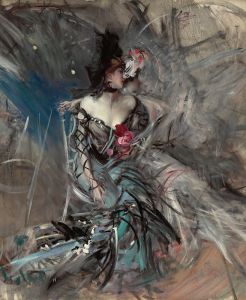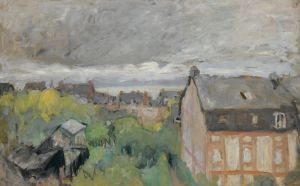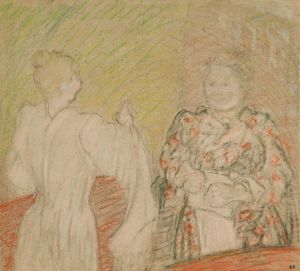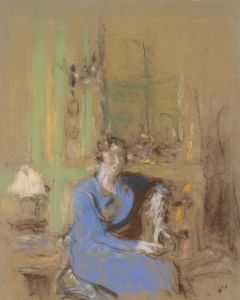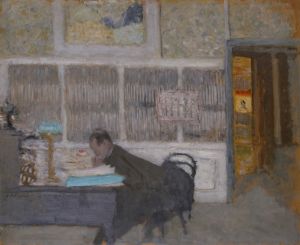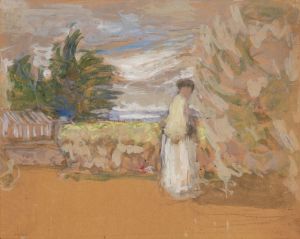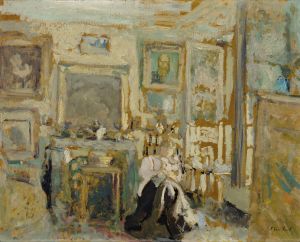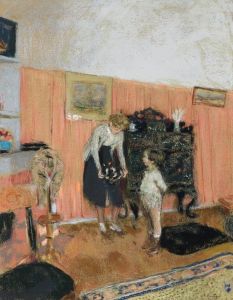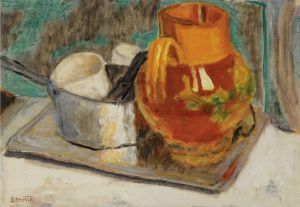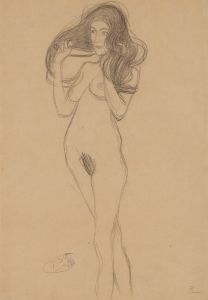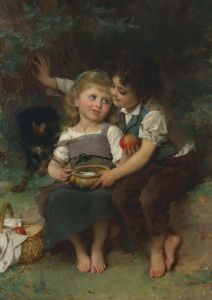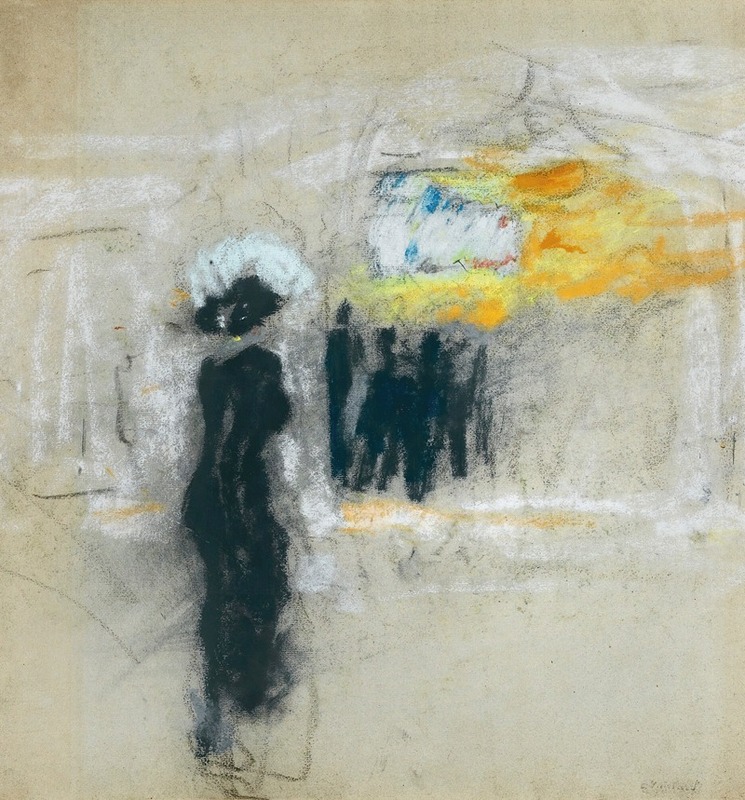
L’élégante Au Moulin Rouge
A hand-painted replica of Édouard Vuillard’s masterpiece L’élégante Au Moulin Rouge, meticulously crafted by professional artists to capture the true essence of the original. Each piece is created with museum-quality canvas and rare mineral pigments, carefully painted by experienced artists with delicate brushstrokes and rich, layered colors to perfectly recreate the texture of the original artwork. Unlike machine-printed reproductions, this hand-painted version brings the painting to life, infused with the artist’s emotions and skill in every stroke. Whether for personal collection or home decoration, it instantly elevates the artistic atmosphere of any space.
Édouard Vuillard, a prominent French painter associated with the Nabi movement, created the painting "L’élégante Au Moulin Rouge" during a period when he was deeply engaged with the themes of domesticity and the intimate aspects of Parisian life. Vuillard, born in 1868, was known for his ability to capture the subtleties of everyday life, often focusing on interior scenes and the interactions of people within them.
"L’élégante Au Moulin Rouge" is a testament to Vuillard's keen observational skills and his ability to convey the atmosphere of a scene through his unique style. The painting depicts a scene at the famous Moulin Rouge, a cabaret in Paris that became a symbol of the bohemian lifestyle of the late 19th and early 20th centuries. The Moulin Rouge was a popular gathering place for artists, writers, and performers, and it played a significant role in the cultural life of Paris during this time.
Vuillard's work is characterized by its use of muted colors and intricate patterns, often blending figures with their surroundings to create a sense of harmony and continuity. In "L’élégante Au Moulin Rouge," Vuillard employs these techniques to capture the essence of the Moulin Rouge's vibrant yet intimate atmosphere. The painting features an elegantly dressed woman, possibly a patron or performer, set against the backdrop of the cabaret's lively interior. Vuillard's use of color and pattern serves to highlight the woman's presence while also integrating her into the bustling environment of the Moulin Rouge.
The painting reflects Vuillard's interest in the interplay between individuals and their environments, a theme that recurs throughout his body of work. His approach often involved a focus on the psychological aspects of his subjects, exploring their relationships with the spaces they inhabit. This is evident in "L’élégante Au Moulin Rouge," where the woman's poised demeanor contrasts with the dynamic setting, suggesting a narrative of personal reflection amidst the social whirl of the cabaret.
Vuillard was a member of the Nabis, a group of avant-garde artists who sought to break away from traditional artistic conventions and explore new forms of expression. The Nabis were influenced by Symbolism and the decorative arts, and they often incorporated elements of these movements into their work. Vuillard's paintings, including "L’élégante Au Moulin Rouge," reflect these influences through their emphasis on mood, emotion, and the decorative potential of color and pattern.
Throughout his career, Vuillard maintained a close connection with the literary and artistic circles of Paris, which informed his work and provided him with a rich source of inspiration. His paintings often feature members of his social circle, capturing the nuances of their interactions and the environments they frequented. This personal connection to his subjects adds a layer of intimacy to his work, inviting viewers to engage with the scenes on a deeper level.
"L’élégante Au Moulin Rouge" is a notable example of Vuillard's ability to convey the complexities of modern life through his art. The painting not only captures a moment in time at one of Paris's most iconic venues but also reflects the broader cultural and artistic currents of the era. Vuillard's work continues to be celebrated for its innovative approach and its ability to evoke the subtle beauty of everyday experiences.





